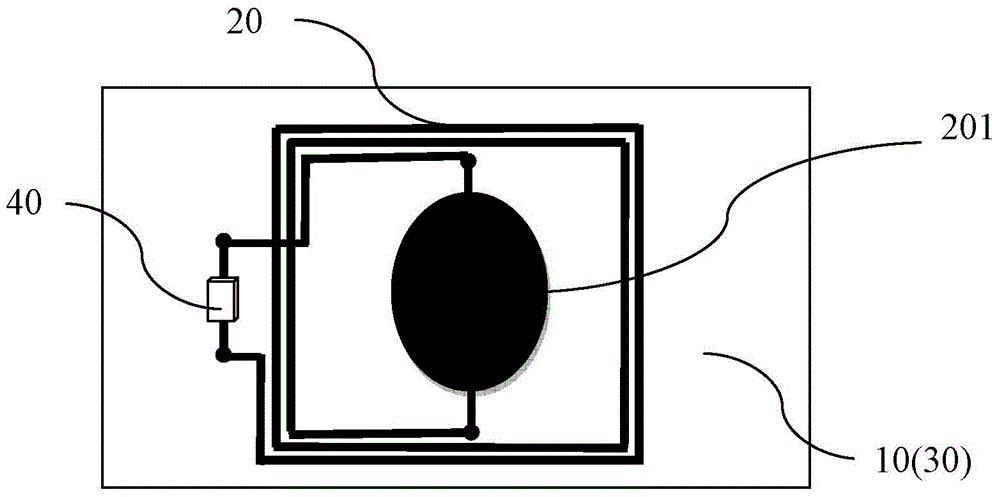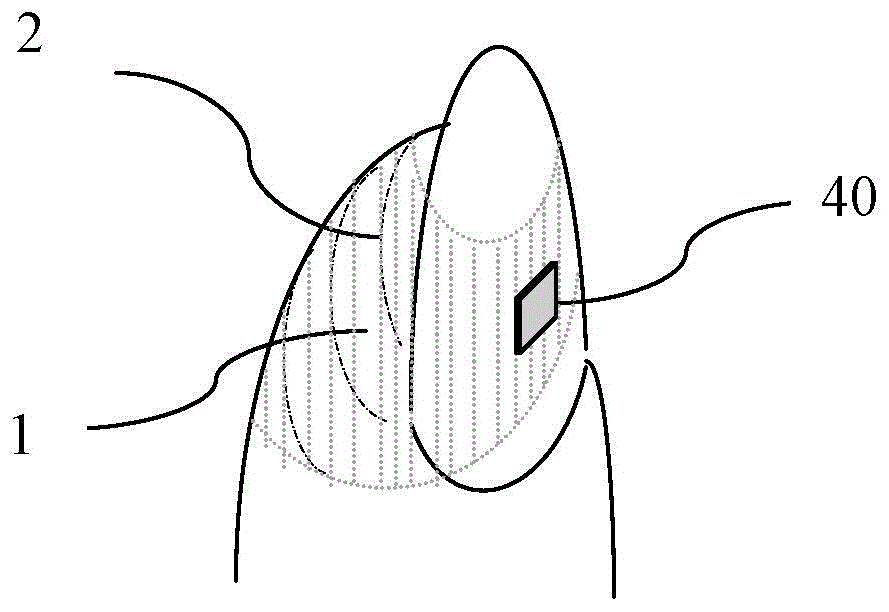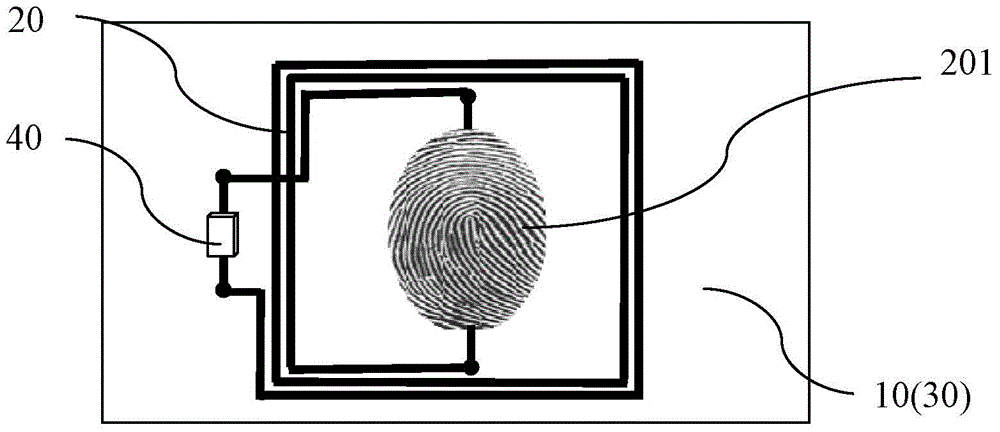Methods and devices for achieving spatial positioning of RFID tag, 3D signature and man-machine interaction
A technology of electronic tags and electronic equipment, which is applied in the direction of recording carriers, circuits, and electrical components used by machines, and can solve problems such as illegal acquisition, easy imitation of fingerprints, and easy imitation
- Summary
- Abstract
- Description
- Claims
- Application Information
AI Technical Summary
Problems solved by technology
Method used
Image
Examples
Embodiment 1
[0129] Thin-film electronic tags have been widely used, but there is no bio-electronic tag generated by the user's body in real time. The fingerprint electronic tag of this embodiment can be attached to a finger to form a biological electronic tag, and the uniqueness of the physical characteristics of the biological electronic tag is achieved by the uniqueness of the user's fingerprint.
[0130] The fingerprint electronic tag of this embodiment is as figure 1 shown, including:
[0131] A flexible film substrate 10;
[0132] An antenna 20 formed by a conductive layer attached to the film substrate 10, the antenna includes a fingerprint area 201, and the fingerprint area 201 forms a fingerprint pattern printed when the fingerprint electronic tag is attached to the finger. Microstrip antenna;
[0133] A protective film 30 covering the antenna and attached to the film substrate; and
[0134] A chip 40 packaged between the film substrate and the protective film and electrically...
Embodiment 2
[0143] The bioelectronic tag or other forms of bioelectronic tags formed based on Embodiment 1 have physiological characteristics corresponding to the user's biological characteristics such as fingerprints. These physical characteristics can be extracted and stored in a certain way, and used for verification of the bioelectronic tag.
[0144] This embodiment relates to a biometric feature extraction method based on bioelectronic tags and corresponding electronic equipment, such as Figure 4 As shown, the method includes:
[0145] Step 110, the electronic device starts the function of the electronic tag reader, and transmits a radio frequency signal;
[0146] It should be noted that the electronic equipment herein (including this embodiment and other embodiments) may include one physical device, and may also include multiple physical devices connected to each other by wire or wirelessly to complete biometric feature extraction. A typical application of this electronic equipmen...
Embodiment 3
[0163] Embodiment 2 After the biometric feature is extracted based on the bioelectronic tag, the extracted biometric feature information can be used to authenticate the user. This embodiment proposes a corresponding bioelectronic tag-based identity verification method and corresponding electronic equipment.
[0164] Such as Figure 6 As shown, the identity verification method based on the bioelectronic tag in this embodiment includes:
[0165] Step 210, the electronic device starts the electronic tag reader function;
[0166] Step 220, the electronic device periodically transmits a radio frequency signal, and detects the response of the bioelectronic tag, which is an electronic tag formed by the human body of the user to be verified in real time; wherein, one cycle includes multiple time slices, On each time slice, use a pair of frequency-power values in the expected user-specific frequency-minimum response power sequence to set the frequency and transmit power of the radi...
PUM
 Login to View More
Login to View More Abstract
Description
Claims
Application Information
 Login to View More
Login to View More - R&D
- Intellectual Property
- Life Sciences
- Materials
- Tech Scout
- Unparalleled Data Quality
- Higher Quality Content
- 60% Fewer Hallucinations
Browse by: Latest US Patents, China's latest patents, Technical Efficacy Thesaurus, Application Domain, Technology Topic, Popular Technical Reports.
© 2025 PatSnap. All rights reserved.Legal|Privacy policy|Modern Slavery Act Transparency Statement|Sitemap|About US| Contact US: help@patsnap.com



